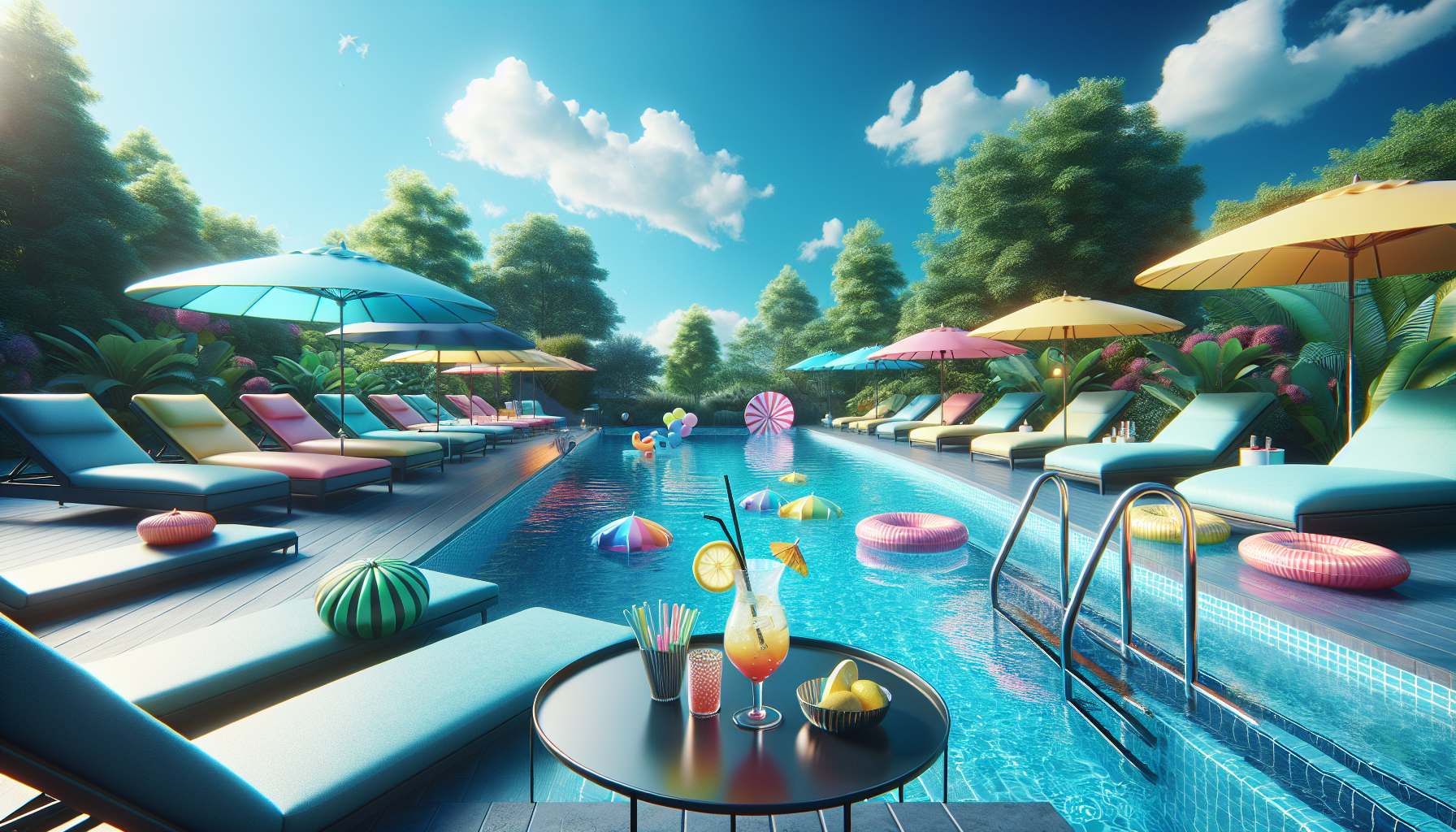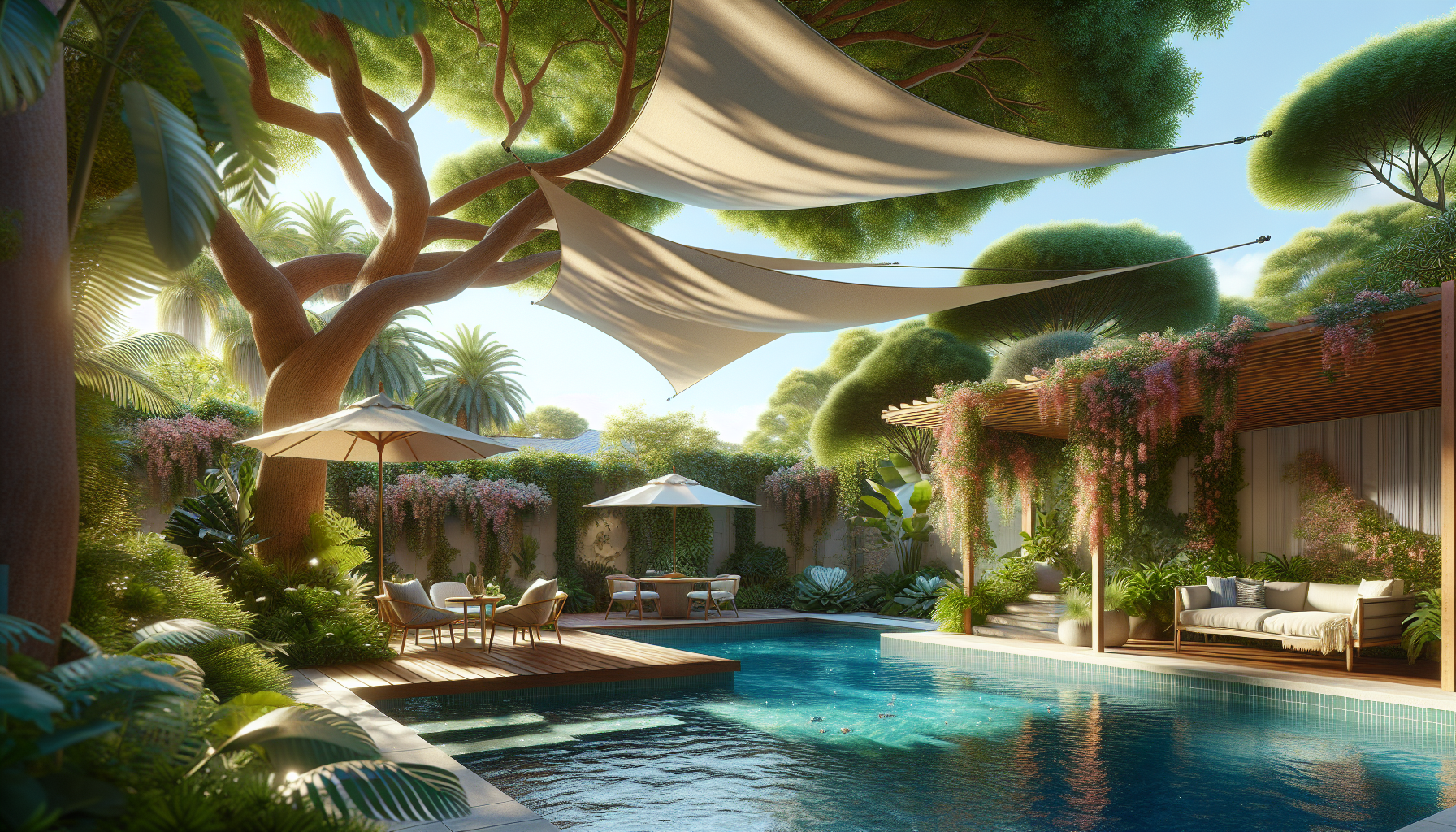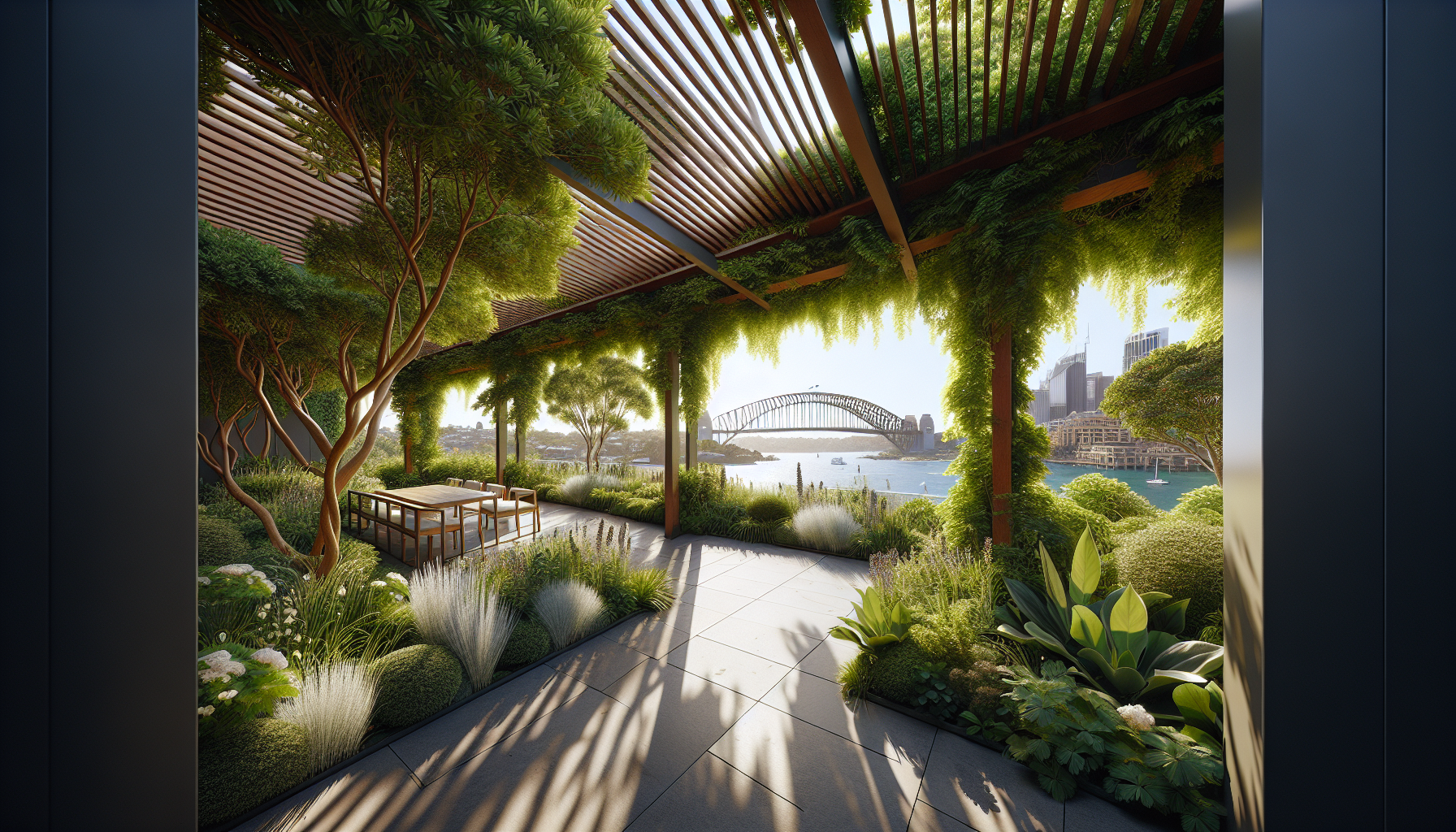Benefits of Installing a Pool Awning for Your Home
A pool awning can be a transformative addition when considering enhancements for your home’s outdoor space. Not only does it elevate the aesthetic appeal of your pool area, but it also offers practical advantages year-round. In this article, we’ll delve into the many benefits of this stylish yet functional feature.
Extended Outdoor Comfort
One of the chief benefits of installing a pool awning is creating a comfortable outdoor living space. By providing ample shade, an awning allows you and your family to enjoy the pool area even during the hottest parts of the day without concern for excessive sun exposure. The added shade can significantly reduce the temperature, creating a cooler environment for relaxation or entertainment. This means more poolside leisure time and less need for retreat indoors when the sun is at its peak.
Enhanced UV Protection
UV protection is a critical component of outdoor health and safety. Shade from a pool awning helps minimize the harmful effects of the sun’s UV rays, which can lead to skin damage and other health complications with prolonged exposure. This is especially important for families with children or individuals sensitive to the sun. With a high-quality awning, you can enjoy peace of mind knowing that your family has an extra layer of protection against the potential risks of sunbathing.
Increased Property Value
Beyond personal comfort and health benefits, installing a pool awning can potentially increase the value of your home. A well-designed awning not only adds to the visual charm of your property but also signals to prospective buyers that the outdoor space is thoughtfully curated and ready for enjoyment. This small investment can yield significant returns by making your property more attractive in the competitive real estate market.
Moreover, a pool awning’s protection extends to poolside furniture and decking materials. By shielding them from the harsh elements, an awning can help prevent fading and wear caused by sun exposure and inclement weather. This translates to savings over time, as the lifespan of your outdoor furnishings is extended, lowering the frequency and costs of replacements. Whether you want to create a serene oasis or a social hub for gatherings, a pool awning adds versatility and function to your home’s ambiance.
Pool Awning Options: Types and Materials Explained
When it comes to creating the perfect outdoor oasis, a pool awning is an essential element for both comfort and style. Understanding the different types of awnings and the materials they are made from is crucial in choosing the right option for your pool area. Awnings offer shade and protection from the elements and enhance the aesthetic appeal of your poolside space.
Retractable vs. Fixed Awnings
Retractable awnings are versatile for pool owners who prefer to bask in the sun or lounge in the shade. With a simple mechanism, these awnings can be extended or retracted to suit the weather conditions and your preference. On the other hand, fixed awnings are permanent structures that provide constant shade and are ideal for regions with consistent climates. Although they do not offer the flexibility of a retractable model, fixed awnings tend to be sturdier and require less maintenance, making them a popular choice for poolside areas.
Materials Matter: Fabric and Metal Awnings
When selecting an awning, the material is as important as the type. Fabric awnings come in various colors and patterns, allowing for a custom look that complements your home’s exterior. Commonly used fabrics include canvas, polyester, and PVC-coated woven polyester, all known for their durability and ability to block harmful UV rays. For those seeking a more modern and long-lasting option, metal awnings made from aluminum or steel provide excellent durability and minimal upkeep. Metal awnings are often coated with a protective layer to prevent rust and corrosion, ensuring your pool area remains stylish and shaded for years to come.
Choosing the Right Awnings for Different Pool Spaces
When deciding on the appropriate awning for your pool area, consider the size of the space and the level of exposure to the elements. Smaller pools may benefit from the intimacy of a fabric awning, creating a cozy nook for relaxation. Larger pool areas might require the expansiveness of a fixed metal awning, offering wide-ranging shade and protection for poolside entertaining. Additionally, the orientation of your pool with respect to the sun’s path should influence your choice, as certain materials and styles offer varying degrees of sun protection throughout the day.
It is vital to choose the right pool awning for your specific needs. The awning’s type and material will shape your outdoor sanctuary’s functionality and appearance. Whether you opt for the versatility of a retractable fabric awning or the steadfast durability of a fixed metal structure, the right choice will enhance your pool experience, providing comfort and style for years to come.
How to Choose the Right Size and Style of Pool Awning
When selecting a pool awning, the size is one of the most critical factors. A properly sized awning will provide enough shade to ensure comfortable poolside relaxation, even during the hottest parts of the day. To determine the ideal size, consider the dimensions of your pool area and how much coverage you want. Measure the length and width of the space you wish to shade and consider extending the awning beyond the pool’s perimeter to protect adjacent seating or dining areas. If your pool is home to frequent social gatherings, opting for a larger awning can ensure ample shaded space for guests.
The style of your pool awning should complement both your home’s architecture and your outdoor space’s landscape. Retractable awnings are immensely popular due to their versatility; they can be extended to provide shade during the hottest parts of the day and retracted to allow sunbathing or stargazing when desired. For a more permanent solution, stationary awnings with structural columns can be built, which provide a constant shade structure. When choosing the style, consider the maintenance requirements as well – retractable awnings may need more regular maintenance than their stationary counterparts.
Material choice is another vital aspect when choosing a pool awning. Fabrics should be durable, resistant to mold, mildew, and UV radiation, and fit your pool area’s aesthetic. For those looking for a long-term investment, sun-resistant fabrics with high colorfastness can maintain their appearance over time despite being subject to the elements. In terms of construction, aluminum and stainless steel offer great durability and can support heavier fabrics or larger awnings without bending or breaking.
Lastly, the color and pattern of the pool awning will affect not only the look but also the functionality. Lighter colors reflect more sunlight, which can keep the shaded area cooler, while darker shades can provide a striking contrast and modern appeal but may retain more heat. Patterns can add visual interest and style to the pool area but should be chosen carefully to not overwhelm the space. Simplistic and classic designs often offer the most timeless look, assuring your pool awning remains stylish for years to come.
DIY vs. Professional Pool Awning Installation: What You Need to Know
When it comes to installing a pool awning, homeowners often grapple with the decision of whether to take on the project themselves or to hire professionals. It’s a decision that involves evaluating the complexity of the project, your technical expertise, and cost considerations. In this segment, we delve into the critical points that will guide you in deciding between DIY and professional pool awning installation.
Understanding the Scope of Installation
Firstly, it’s essential to understand the scope of the installation process. A DIY pool awning installation can be appealing due to the potential cost savings. It could be a viable option if you have a simple, small-scale awning and some basic handyman skills. However, being realistic about your skill level and the time commitment required is crucial. Incorrect installation could lead to structural issues, warranty voids, or even personal injury.
On the other hand, opting for professional installation ensures that the job is done correctly from the get-go. Experienced installers bring precision and expertise that is difficult to match on a DIY basis. They can handle the complex measurements, customized fittings, and secure anchoring that large or motorized awnings may require. Moreover, they are typically equipped to deal with unexpected installation challenges, such as non-standard pool deck materials or awkward installation angles.
Cost vs. Quality
The balance between cost and quality is a major factor in this decision. While DIY may seem cost-effective, consider the investment in tools, materials, and potentially additional help. There’s also the risk of costly errors, ultimately making DIY more expensive than anticipated.
Professional installation might come with a higher upfront cost, but it often includes a service warranty and assurance that your awning is robust and properly installed. This can translate to lower maintenance costs and better longevity, making it a cost-effective option in the long run.
The Value of Time and Safety
Time and safety are other critical considerations. DIY projects can be time-consuming, particularly if you learn as you go. Moreover, installing an awning involves working at a height, which carries inherent safety risks. Without the right equipment or experience, these risks can be significantly amplified.
Conversely, professional installers adhere to safety protocols and can complete the job efficiently. This means your awning will be up and ready to provide shade for your pool area much sooner without compromising your safety or that of your loved ones.
In conclusion, choosing between DIY and professional pool awning installation is not a decision to be taken lightly. Homeowners must weigh their ability to execute the project safely and efficiently against the potential benefits and assurances that come with professional services.
Maintaining Your Pool Awning: Tips for Longevity and Performance
Maintaining your pool awning is crucial in extending its lifespan and ensuring it continues providing the necessary shade and aesthetic appeal. Regular care will prevent common issues such as fading, tearing, and structural damage that can be costly. It’s essential to start with the basics: routinely removing any debris, such as leaves or twines, accumulated on the top and underside. A soft broom or brush works well, as sharp tools can inadvertently puncture or scrape the fabric or metal parts.
For fabric awnings, a key aspect of maintenance involves cleaning. Using a mild soap and water solution is recommended to gently clean the awning’s surface at least twice a year. This will help prevent mold and mildew growth, which can degrade the material over time. For metal parts, ensure they are rust-free by applying a protective coating or sealant, especially if your pool area is exposed to saltwater or chlorine fumes. Remember to address any small rips or tears immediately before they expand and require professional repair or replacement.
In addition to routine care, proper operation is pivotal in maintaining your pool awnings’ longevity and performance. To avoid unnecessary strain or damage, make sure to retract your awning during extreme weather conditions such as high winds, heavy snow, or hail. If your awning is motorized, keep an eye on the mechanical systems and lubricate any moving parts as the manufacturer instructs. This is often overlooked but plays a significant role in the smooth operation and prevention of premature wear and tear.
Environmental factors also play a part in your awning’s longevity. Positioning your awning to minimize exposure to direct sunlight when not in use can help prevent fading and fabric degradation. If you’re in an area with lots of trees, it may be wise to trim back branches that could potentially fall and damage the awning. Additionally, consider applying a UV protectant to the fabric, which can extend its vibrancy and structural integrity against the harsh effects of the sun. With careful attention to these details, your pool awning will continue to be functionally reliable and visually appealing for years to come.




